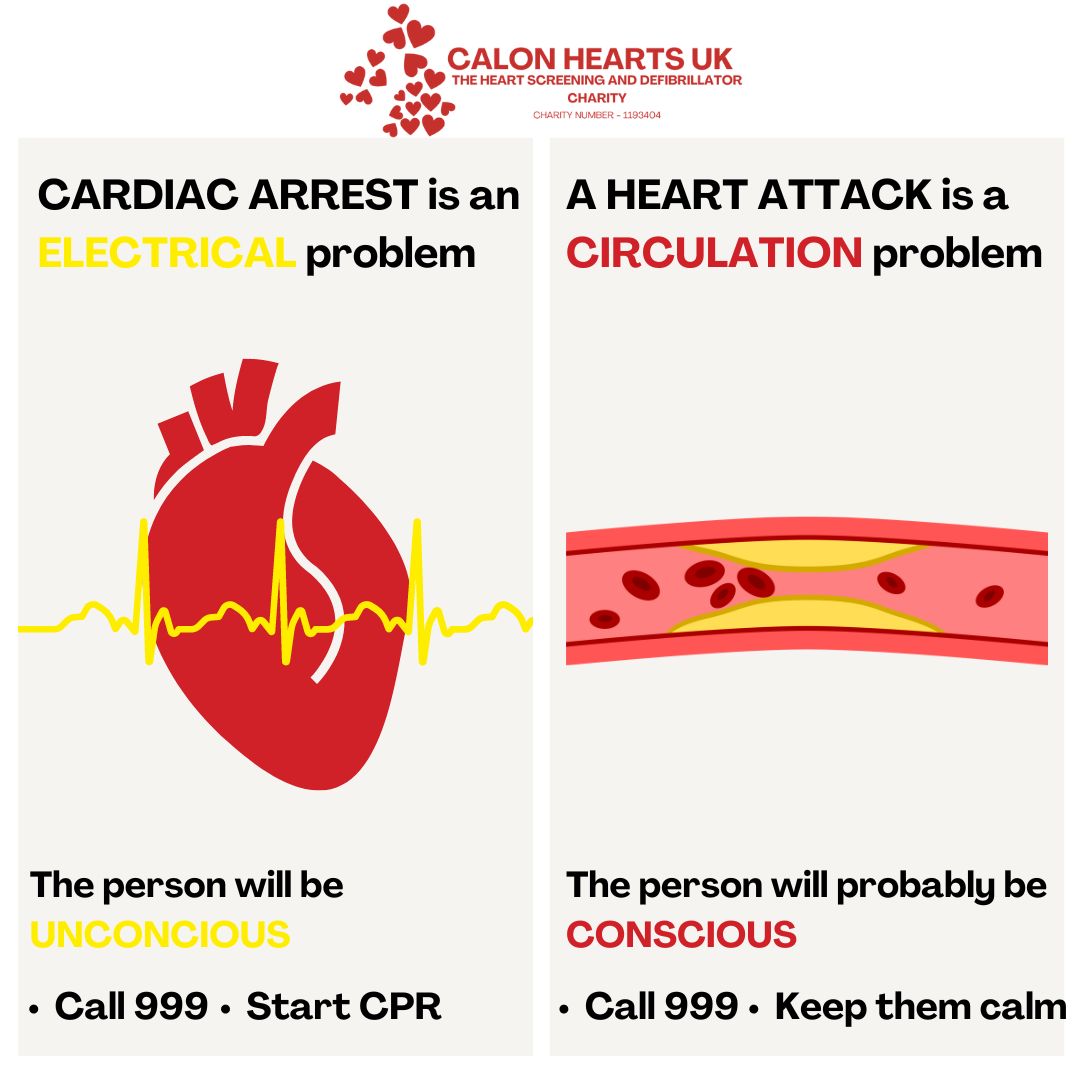CPR stands for cardiopulmonary resuscitation. It’s a life saving medical procedure that is given to someone who is in cardiac arrest. It helps to pump blood around the person’s body when their heart can’t.
To carry out CPR a person presses firmly up and down on the casualty’s chest (chest compressions) and gives them a series of rescue breaths if you are able or willing to help save their life when they are in cardiac arrest.
Heart attack and cardiac arrest are terms that are often used interchangeably, but they are not the same thing.

There is a big difference between a cardiac arrest & a heart attack. They both involve the heart and you should dial 999 for an ambulance immediately in both cases.
Cardiac arrest: If a person is unconscious, not breathing & has no pulse, start CPR immediately as they are in cardiac arrest.
Heart attack: A heart attack happens when there is a sudden loss of blood flow to a part of your heart muscle. Most heart attacks are caused by coronary heart disease. Heart attack suffers will probably be conscious & the most common signs of a heart attack are:
- Chest pain (tightness, heaviness, pain or a burning feeling in your chest).
- Pain in arms, neck, jaw, back or stomach (for some people, the pain or tightness is severe, while other people just feel uncomfortable).
- Sweating.
- Feeling light-headed.
- Becoming short of breath.
- Feeling nauseous or vomiting.